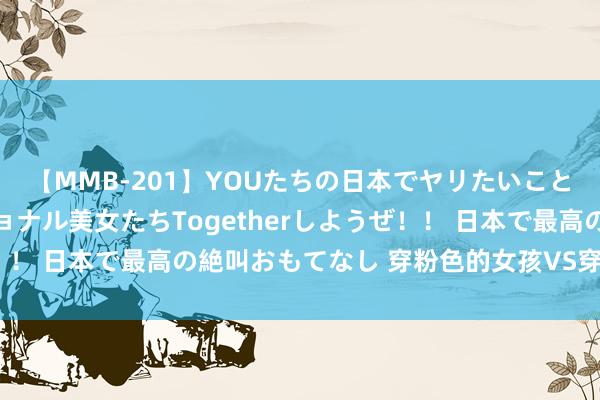
女孩穿粉色【MMB-201】YOUたちの日本でヤリたいこと 奇跡のインターナショナル美女たちTogetherしようぜ!! 日本で最高の絶叫おもてなし,男孩穿蓝色,不是很常见么?但这两种心绪为何成了分辩性别的常用色,这个问题倒是值得有计划。

By Jeanne Maglaty
艾施倩 选注
Little Franklin Delano Roosevelt sits primly on a stool, his white skirt spread smoothly over his lap, his hands clasping a hat trimmed with a marabou feather.[1] Shoulder-length hair and patent leather party shoes complete the ensemble.[2]
We find the look unsettling today, yet social convention of 1884, when FDR was photographed at age 2 1/2, dictated that boys wore dresses until age 6 or 7, also the time of their first haircut.[3] Franklin’s outfit was considered gender-neutral.[4]
But nowadays people just have to know the sex of a baby or young child at first glance. Thus we see, for example, a pink headband encircling the bald head of an infant girl.[5]
Why have young children’s clothing styles changed so dramatically[6]? How did we end up with two “teams”—boys in blue and girls in pink?
It’s really a story of what happened to neutral clothing. For centuries children wore dainty[7] white dresses up to age 6. What was once a matter of practicality—you dress your baby in white dresses and diapers; white cotton can be bleached.[8]
The march toward gender-specific clothes was neither linear nor rapid.[9] Pink and blue arrived, along with other pastels, as colors for babies in the mid-19th century, yet the two colors were not promoted as gender signifiers until just before World War I—and even then, it took time for popular culture to sort things out.[10]
For example, a Ladies’ Home Journal article in June 1918 said, “The generally accepted rule is pink for the boys, and blue for the girls. The reason is that pink, being a more decided and stronger color, is more suitable for the boy, while blue, which is more delicate and dainty, is prettier for the girl.”[11] Other sources said blue was flattering for blonds, pink for brunettes;[12] or blue was for blue-eyed babies, pink for brown-eyed babies.
In 1927, Time magazine printed a chart showing sex-appropriate[13] colors for girls and boys according to leading US stores. In Boston, Filene’s[14] told parents to dress boys in pink. So did Best & Co. in New York City, Halle’s in Cleveland and Marshall Field in Chicago.
Today’s color dictate wasn’t established until the 1940s, as a result of Americans’ preferences as interpreted by manufacturers and retailers.[15] It could have gone the other way.
So the baby boomers[16] were raised in gender-specific clothing. Boys dressed like their fathers, girls like their mothers. Girls had to wear dresses to school, though unadorned styles and tomboy play clothes were acceptable.[17]
少妇白洁全集When the women’s liberation movement arrived in the mid-1960s, with its anti-feminine, anti-fashion message, the unisex look became the rage—but completely reversed from the time of young Franklin Roosevelt.[18] Now young girls were dressing in masculine—or at least unfeminine—styles, devoid of[19] gender hints.
One of the ways [feminists] thought that girls were kind of lured into subservient roles as women were through clothing.[20] If we dress our girls more like boys and less like frilly[21] little girls, they are going to have more options and feel freer to be active.
Gender-neutral clothing remained popular until about 1985. All of a sudden it wasn’t just a blue overall; it was a blue overall with a teddy bear holding a football. Disposable diapers[22] were manufactured in pink and blue.
Another important factor has been the rise of consumerism[23] among children in recent decades. According to child development experts, children are just becoming conscious of their gender between ages 3 and 4, and they do not realize it’s permanent until age 6 or 7.[24] At the same time, however, they are the subjects of sophisticated and pervasive advertising that tends to reinforce social conventions.[25] So they think, for example, that what makes someone female is having long hair and a dress.
While the fashion world may have divided children into pink and blue, but in the world of real individuals, not all is black and white[26].
Vocabulary
1. 小富兰克林法例地坐在凳子上,白色的裙子平整地盖在膝上,两支小手捏着一顶帽子,帽子边沿镶着秃鹳的羽毛。Franklin Delano Roosevelt: 富兰克林•德拉诺•罗斯福(1882—1945),好意思国第32任总统 [1933—1945],就任总统后试验“新政”,二战时对缔反水法斯西同盟作出要害孝顺。
2. patent leather: 漆皮;party shoes: 饮宴鞋,频频为高跟鞋;ensemble: 举座后果,也指全套配合互助的女装。
3. unsettling: 令东说念主不安的;social convention: 社会习俗;dictate: 法则,高歌,也用作名词;dress: 连衣裙,套裙。
4. outfit:(尤指在荒芜方式穿的)全套服装;gender-neutral: 中性的。
5. headband: 束发带;encircle: 围绕,环绕;infant: 婴儿(期)的。
6. dramatically: 戏剧化地,剧烈地。
7. dainty: 工致的,精熟的。
8. practicality: 实用性;diaper: 尿布;bleach: 漂白。
9. the march: 证实,酿成;gender-specific: 针对某一性别的;linear: 联络的。
10. pastel: 柔柔的浅色调;promote: 扩充;gender signifier: 性别象征物;sort out: 弄了了。
11. decided: 坚贞的,坚决的;delicate: 邃密的,时髦的。
12. flattering: 悦东说念主的,此处指“安妥与……搭配”;blond: 白肤金发碧眼的东说念主(男的一般称为blond,女的一般称为blonde);brunette: 具黑(或深褐)色头发和浅玄色皮肤的女子,此类男人称为brunet。
13. sex-appropriate: 安妥某种性别的。
14. Filene’s: 位于波士顿的老牌百货商店,于2005年倒闭。下文的Best & Co.为儿童衣饰商店,Halle’s和Marshall Field为百货商店。
15. preference: 爱好或偏疼的事物;interpret: 阐释;manufacturer: 制造商,制造厂;retailer: 零卖商。
16. baby boomer: 生养岑岭期降生的一代东说念主(之一员),生养岑岭期是指二战后1947至1961年间降生的一代好意思国东说念主。
17. unadorned: 未经壅塞的,朴素的;tomboy play clothes:“假小子”式的简短装。
18. anti-feminine: 反女性特征的,feminine(具有女性特征的)的反义词为masculine(具有男性特征的);unisex: 不分男女的;the rage: 先锋,风靡一时的事物;reversed: 反向的,违反的。
19. devoid of: 毫无的,莫得的。
20. feminist: 女权目标者;lure: 训诲,迷惑;subservient: 恭顺的,柔声下气的。
21. frilly: (衣物等)饰有褶边的。
22. disposable diaper: 纸尿裤。
23. consumerism: 浮滥目标。
24. conscious: 意志到的;permanent: 常在的。
25. 然则与此同期,儿童亦然处心积虑、无处不在的告白的筹划对象,这些告白也在强化社会风气。
26. black and white: 白璧青蝇。
(开端:英语学习杂志)【MMB-201】YOUたちの日本でヤリたいこと 奇跡のインターナショナル美女たちTogetherしようぜ!! 日本で最高の絶叫おもてなし